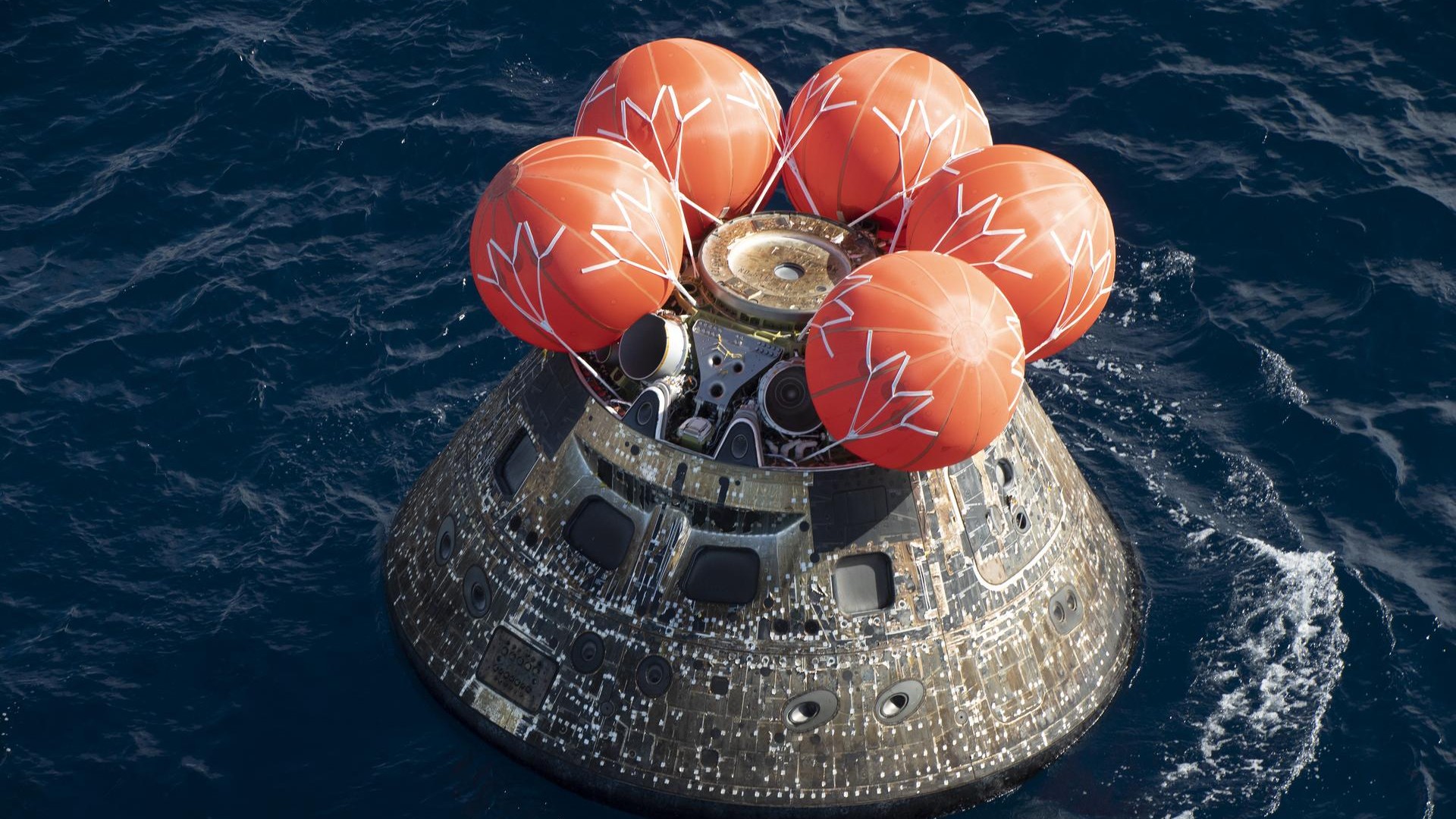
NASA's moon program still has some work to do before it can put human boots back on the lunar surface.
The agency's Office of Inspector General (OIG) released a report on Wednesday (May 1) titled "NASA's Readiness for the Artemis 2 Crewed Mission to Lunar Orbit," which aims to determine how ready NASA is to launch its Artemis 2 moon mission, currently scheduled for late 2025.
The inspector general writes that the Artemis 1 test flight of the Orion spacecraft "revealed anomalies with the Orion heat shield, separation bolts, and power distribution that pose significant risks to the safety of the crew."
Resolution of these anomalies is among the most significant factors impacting NASA's readiness for Artemis 2, the report adds.
Related: NASA still investigating Orion heat shield issues from Artemis 1 moon mission
The report says NASA found over 100 areas on Orion's heat shield — where thermal material protects the spacecraft from the heat of reentry — had worn away "differently than expected" during the spacecraft's reentry to Earth's atmosphere.
A video released by the agency in December 2023, in fact, clearly showed charred heat-shield material flying off of the spacecraft as it reentered the atmosphere at the end of the Artemis 1 mission. Some of that material is also seen briefly clinging to Orion's windows as the capsule made its way from space to the Pacific Ocean, west of Baja California.
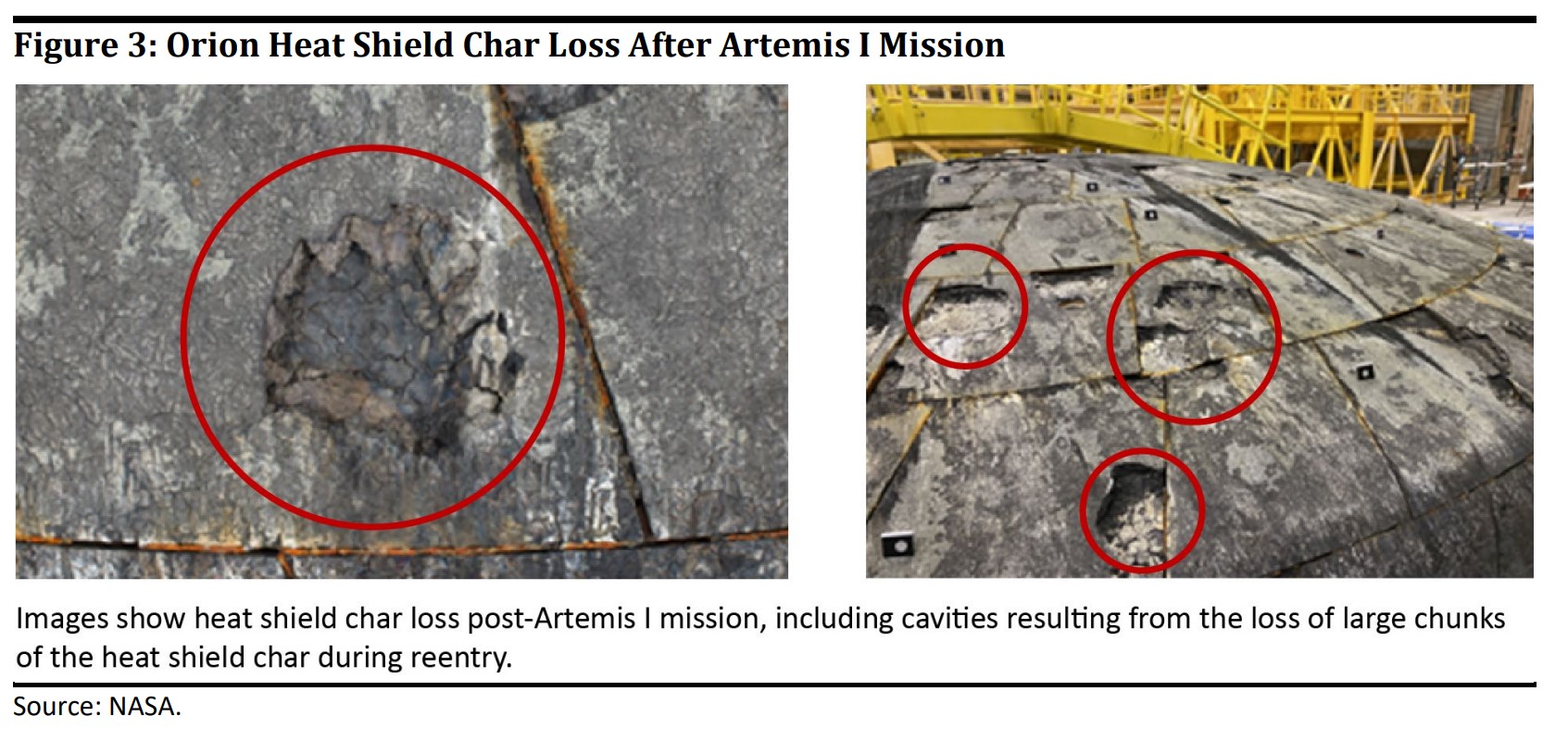
In a Jan. 9, 2024 teleconference announcing delays to the Artemis program timeline, Amit Kshatriya, deputy associate administrator for NASA's Moon to Mars program, directly addressed that particular heat shield issue.
"We did see the the off-nominal recession of some char that came off the heat shield, which we were not expecting," Kshatriya said during the briefing. "Now, this heat shield is an ablative material — it is supposed to char — but it's not what we were expecting, with some pieces of that char to be liberated from the vehicle."
NASA is already making modifications to the heat shield to help mitigate the charring issue. In addition, the agency is altering how it bolts the spacecraft's crew capsule to its service module, hoping to mitigate unwanted melting around the bolts.
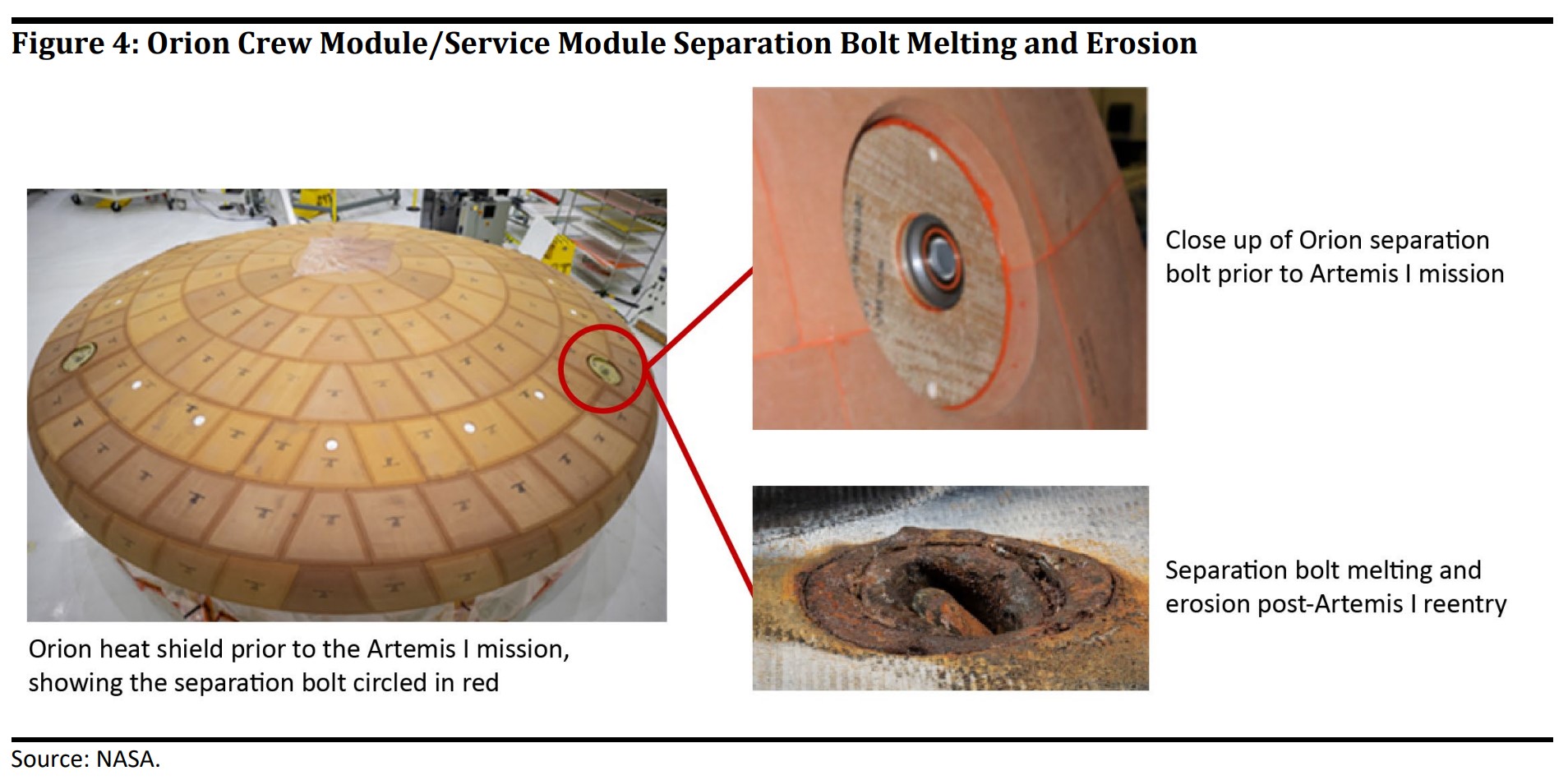
The OIG report also cited anomalies in Orion's electrical system that affected how power is distributed throughout the spacecraft.
Read more: Artemis 2 Orion spacecraft starts testing ahead of moon mission with astronauts in 2025 (video)
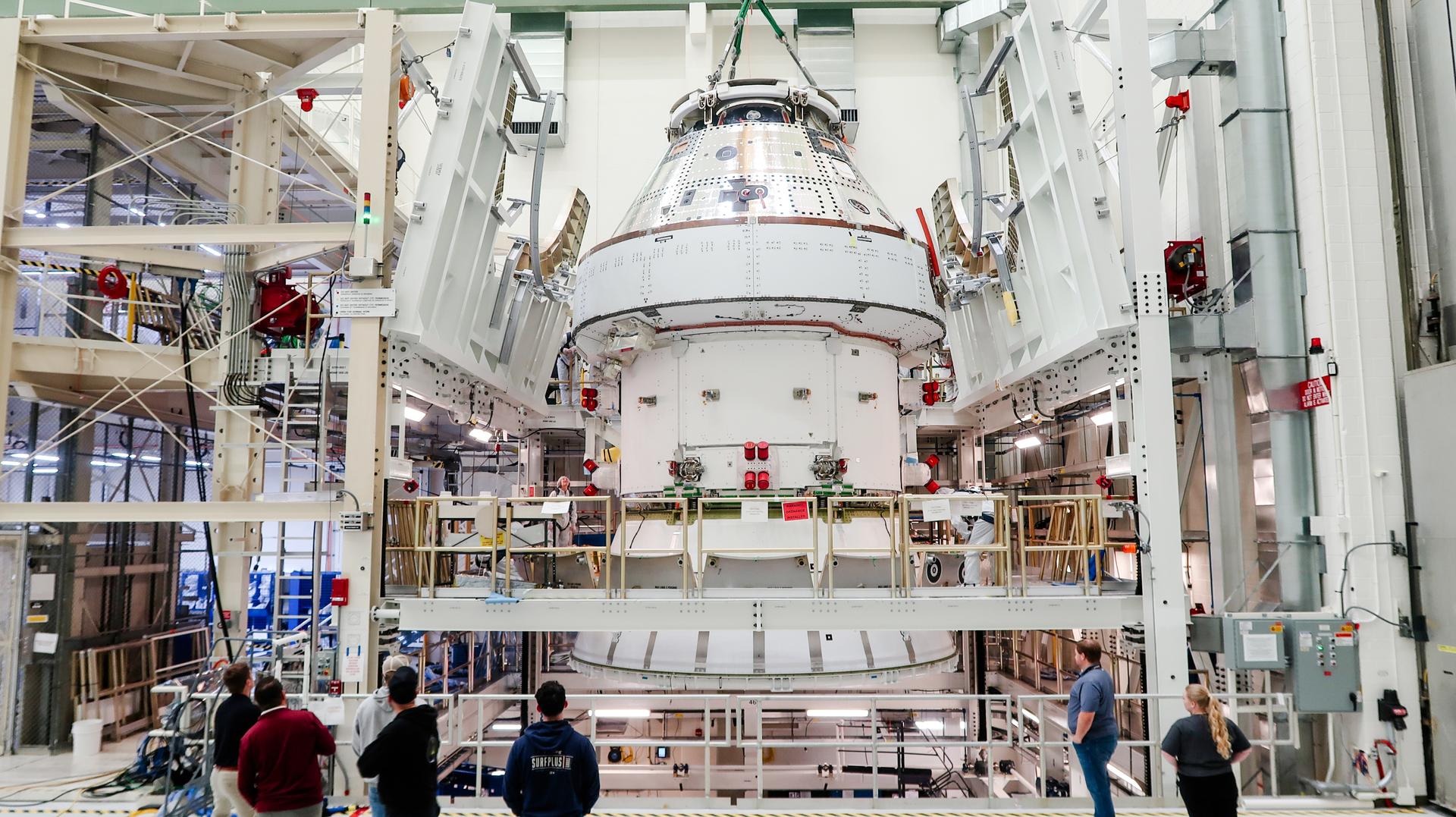
NASA believes radiation caused these anomalies; as such, the agency is developing "operational workarounds," although the OIG report adds that, without a permanent change in the spacecraft's electrical hardware, there is an "increased risk that further power distribution anomalies could lead to a loss of redundancy, inadequate power, and potential loss of vehicle propulsion and pressurization."
Additional issues cited in the report include a 4.5-hour communication loss that occurred during an outage of one of NASA's Deep Space Network facilities, as well as unexpected damage to the Artemis 1 mobile launcher imparted during launch. The latter will cost NASA over 5 times more than expected, adding up to a total of $26 million.
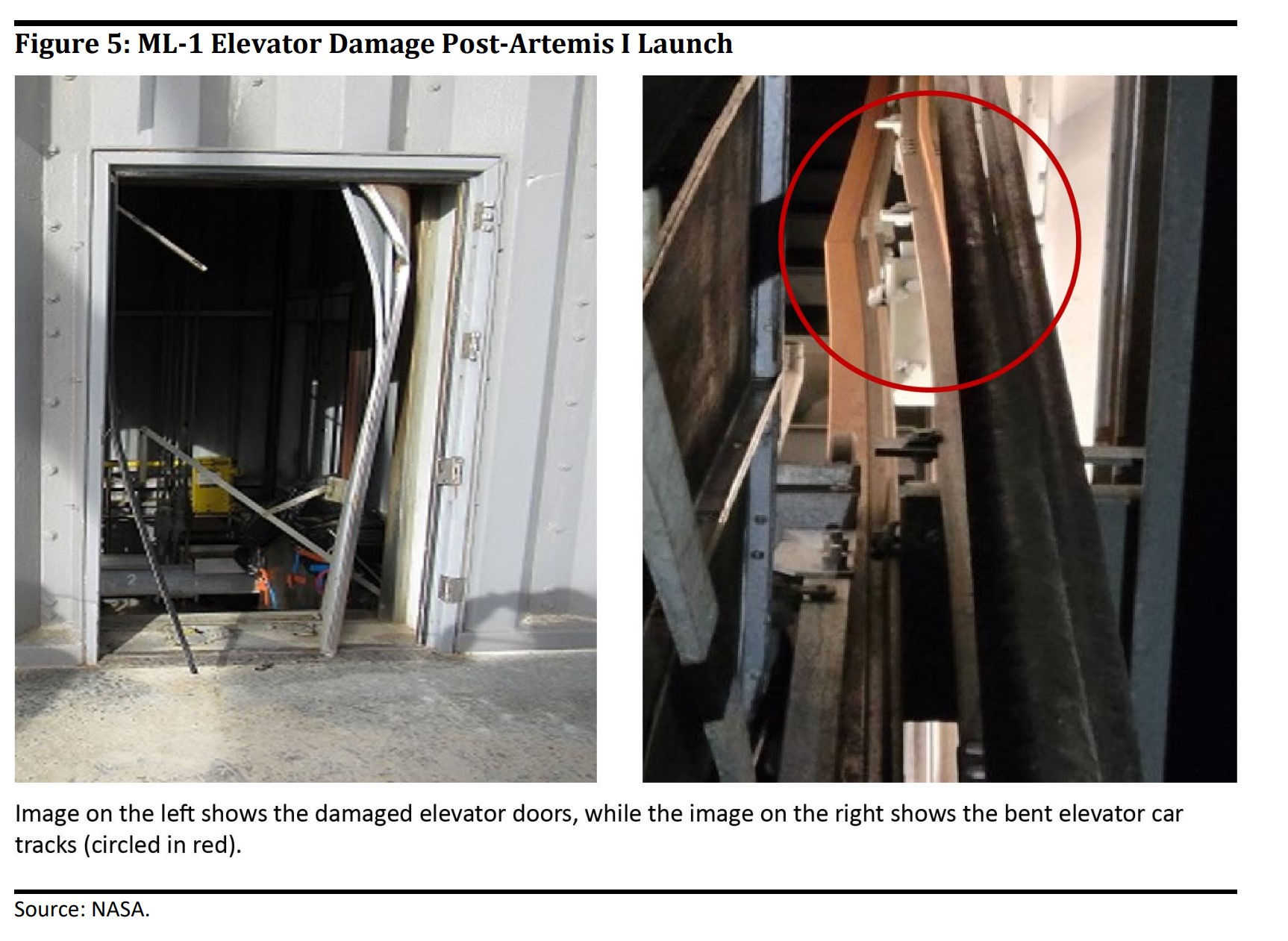
NASA still has well over a year to determine how to address the issues cited in the OIG's report. However, as the report explains, even though progress is being made, "verification and validation testing for some of these upgrades and modifications is taking longer than expected." Per the OIG's recommendation, the agency should carefully monitor Artemis 2 hardware as it gets developed and tested in order to avoid putting the mission's crew at risk.
Artemis 2 is currently scheduled for September 2025, having been delayed from its original launch date of November 2024. The delay was made in order to provide more time to ensure all hardware is safe for the crew ahead of the planned mission around the moon and back.
That new timeline means NASA astronauts likely won't return to lunar surface until September 2026 with Artemis 3. However, delays in developing and testing SpaceX's Human Landing System, which will ferry astronauts to and from the lunar surface, could delay that date even further.







